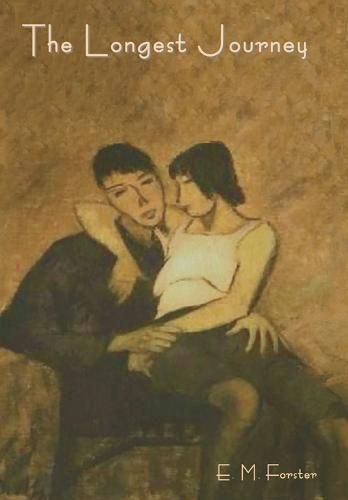Readings Newsletter
Become a Readings Member to make your shopping experience even easier.
Sign in or sign up for free!
You’re not far away from qualifying for FREE standard shipping within Australia
You’ve qualified for FREE standard shipping within Australia
The cart is loading…






This title is printed to order. This book may have been self-published. If so, we cannot guarantee the quality of the content. In the main most books will have gone through the editing process however some may not. We therefore suggest that you be aware of this before ordering this book. If in doubt check either the author or publisher’s details as we are unable to accept any returns unless they are faulty. Please contact us if you have any questions.
The Longest Journey is a bildungsroman by E. M. Forster, first published in 1907. It is the second of Forster's six published novels, following Where Angels Fear to Tread (1905) and preceding A Room with a View (1908) and Howards End (1910). It was Forster's favourite among his own novels.
Forster mapped out a loose plot in July 1904 after meeting a shepherd boy whilst walking in Wiltshire. He spent the first half of 1906 working on the novel. Returning to Weybridge from abroad in October 1906, Forster worked to complete it.
Critically The Longest Journey is the most polarizing of Forster's novels. The novel was well-reviewed but had disappointing sales when first released; it is most often viewed as a minor work compared to Forster's later novels. However, even in Forster's lifetime there was reassessment of the novel's quality, with literary critic Lionel Trilling calling it "...perhaps the most brilliant, the most dramatic, and the most passionate of his works." According to Margaret Drabble both the structure and the uncharacteristically high death count which occurs later in the book confuse fans of Forster's. Gilbert Adair wrote that the greatest weaknesses for readers is its "unrelenting intellectuality, its sublimation and even outright repression of the importance of the erotic in human relationships" and the "...not always intentional priggishness of its characters", which he saw as constituting a poignant quality. (wikipedia.org)
$9.00 standard shipping within Australia
FREE standard shipping within Australia for orders over $100.00
Express & International shipping calculated at checkout
This title is printed to order. This book may have been self-published. If so, we cannot guarantee the quality of the content. In the main most books will have gone through the editing process however some may not. We therefore suggest that you be aware of this before ordering this book. If in doubt check either the author or publisher’s details as we are unable to accept any returns unless they are faulty. Please contact us if you have any questions.
The Longest Journey is a bildungsroman by E. M. Forster, first published in 1907. It is the second of Forster's six published novels, following Where Angels Fear to Tread (1905) and preceding A Room with a View (1908) and Howards End (1910). It was Forster's favourite among his own novels.
Forster mapped out a loose plot in July 1904 after meeting a shepherd boy whilst walking in Wiltshire. He spent the first half of 1906 working on the novel. Returning to Weybridge from abroad in October 1906, Forster worked to complete it.
Critically The Longest Journey is the most polarizing of Forster's novels. The novel was well-reviewed but had disappointing sales when first released; it is most often viewed as a minor work compared to Forster's later novels. However, even in Forster's lifetime there was reassessment of the novel's quality, with literary critic Lionel Trilling calling it "...perhaps the most brilliant, the most dramatic, and the most passionate of his works." According to Margaret Drabble both the structure and the uncharacteristically high death count which occurs later in the book confuse fans of Forster's. Gilbert Adair wrote that the greatest weaknesses for readers is its "unrelenting intellectuality, its sublimation and even outright repression of the importance of the erotic in human relationships" and the "...not always intentional priggishness of its characters", which he saw as constituting a poignant quality. (wikipedia.org)